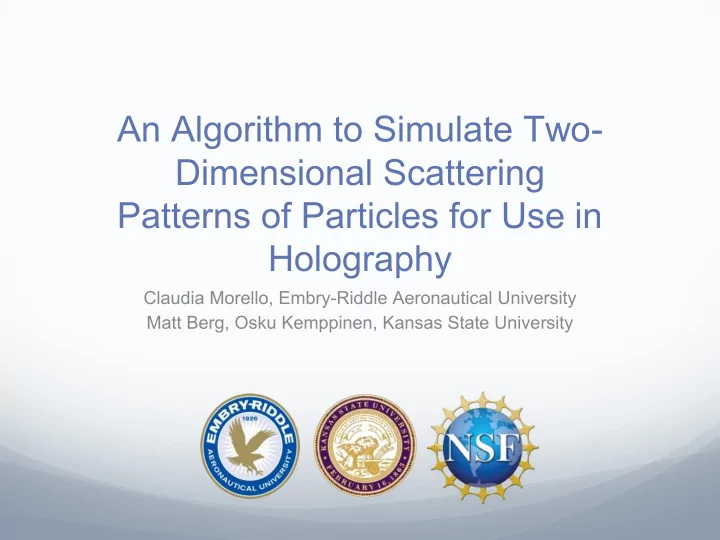

An Algorithm to Simulate Two- Dimensional Scattering Patterns of Particles for Use in Holography Claudia Morello, Embry-Riddle Aeronautical University Matt Berg, Osku Kemppinen, Kansas State University
Overview Holography is Relatively new Lots of effort Perfect to use for tiny things that move Will be used with a drone for agricultural research
My Project To create an algorithm that will make the scattering pattern for any particle Basically to make a library to match a scattering pattern to a particle
Process Learn python/ theory Figure out algorithm by comparing the experimental and simulated pattern using trial and error Test and refine the algorithm Simulate the patterns of every particle I can
Theory Rayleigh Scattering Interference Symmetry
Algorithm Designed by starting with a silhouette of a particle and an experimental scattering pattern to see how similar I could get Now only need a silhouette
Testing Airy Curve
From Huygens-Fresnel and Babinet Principles
Pecan Pollen Two Spherical Particles Glass Sphere
Conclusion No one really knew how well this project would work Worked a lot better than anticipated Can now simulate 2-D scattering patterns of nearly any particle Future work will probably consist of making a library to match the scattering pattern to the particle Or 3D patterns
References 1. M. J. Berg, S. Holler (2016). Simultaneous holographic imaging and light-scattering pattern measurement of individual microparticles (pdf). Optics Letters, 41, 3363 -3366. 2. “ Open-CV Python Tutorial." Open-CV . Open Source Computer Vision, n.d. Web. 28 Jul. 2017.
Recommend
More recommend